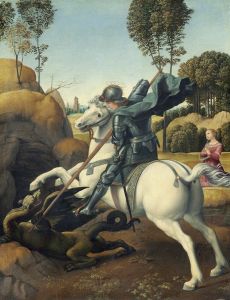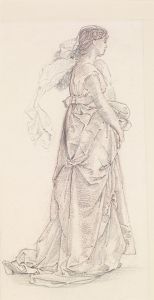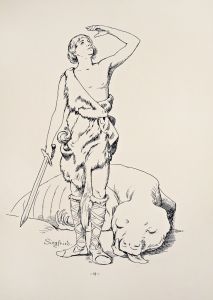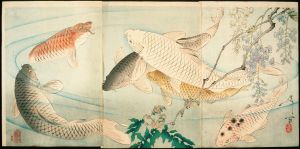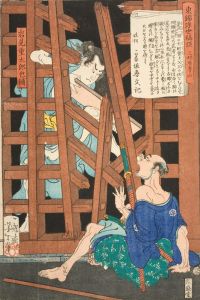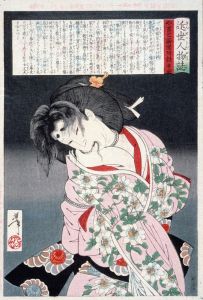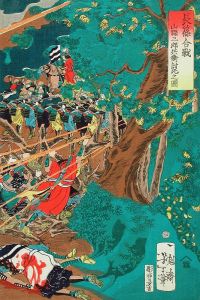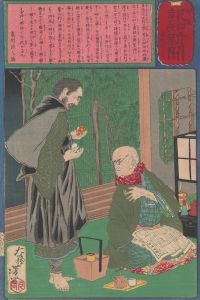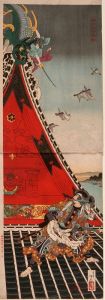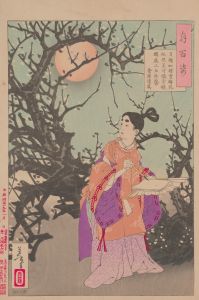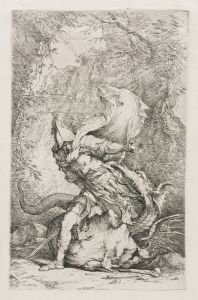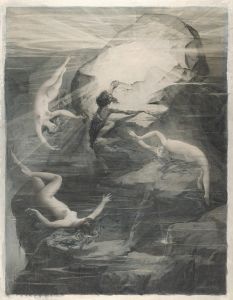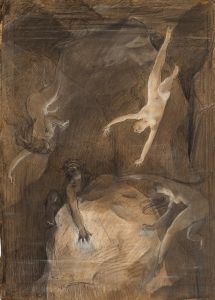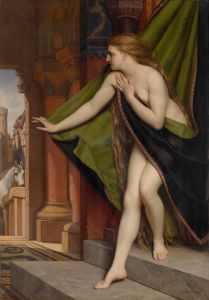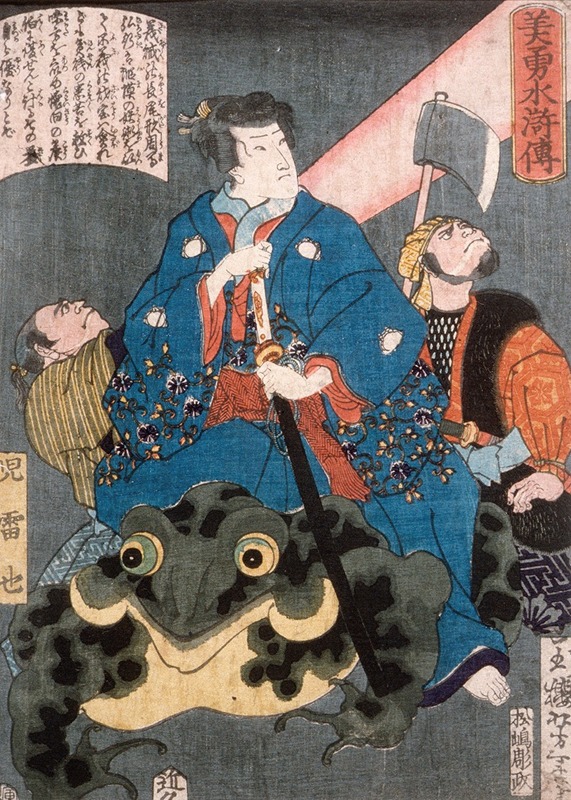
Jiraiya Riding a Frog
A hand-painted replica of Tsukioka Yoshitoshi’s masterpiece Jiraiya Riding a Frog, meticulously crafted by professional artists to capture the true essence of the original. Each piece is created with museum-quality canvas and rare mineral pigments, carefully painted by experienced artists with delicate brushstrokes and rich, layered colors to perfectly recreate the texture of the original artwork. Unlike machine-printed reproductions, this hand-painted version brings the painting to life, infused with the artist’s emotions and skill in every stroke. Whether for personal collection or home decoration, it instantly elevates the artistic atmosphere of any space.
"Jiraiya Riding a Frog" is a woodblock print created by the renowned Japanese artist Tsukioka Yoshitoshi. Yoshitoshi, born in 1839 and active during the late Edo and early Meiji periods, is celebrated for his innovative approach to ukiyo-e, a genre of Japanese art that flourished from the 17th through 19th centuries. His work often depicted historical scenes, kabuki actors, beautiful women, and supernatural themes, reflecting the cultural transitions of his time.
This particular artwork is part of Yoshitoshi's series "One Hundred Ghost Stories of China and Japan" (Wakan hyaku monogatari), which was published in the 1860s. The series explores various supernatural tales and folklore from both Chinese and Japanese traditions, showcasing Yoshitoshi's fascination with the macabre and the mystical.
The print features Jiraiya, a legendary figure from Japanese folklore, who is often depicted as a gallant ninja with the ability to summon and control toads. Jiraiya is a character from the "Jiraiya Gōketsu Monogatari" (The Tale of the Gallant Jiraiya), a popular serialized novel from the Edo period. In the story, Jiraiya is a noble bandit who uses his magical powers to fight against evil and protect the innocent. His ability to ride and command giant toads is one of his most distinctive traits, symbolizing his mastery of toad magic.
In "Jiraiya Riding a Frog," Yoshitoshi captures the dynamic and fantastical essence of the character. The composition typically portrays Jiraiya in a heroic pose atop a large, powerful toad, emphasizing his command over the creature. The artwork is characterized by Yoshitoshi's meticulous attention to detail and his skillful use of color and line to create a sense of movement and drama. The print exemplifies the artist's ability to blend traditional ukiyo-e techniques with his unique, expressive style.
Yoshitoshi's work, including this print, is noted for its vivid imagery and emotional depth, often reflecting the turbulent times in which he lived. The late Edo period was a time of significant social and political change in Japan, transitioning into the Meiji era, which saw the country opening up to Western influences and modernization. Yoshitoshi's art captures the tension between traditional Japanese culture and the new, rapidly changing world.
"Jiraiya Riding a Frog" is a testament to Yoshitoshi's enduring legacy as one of the last great masters of ukiyo-e. His prints continue to be celebrated for their artistic innovation and their ability to convey complex narratives through visual storytelling. Today, Yoshitoshi's works are highly regarded by collectors and art historians, and they remain influential in the study of Japanese art and culture.





